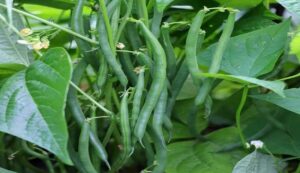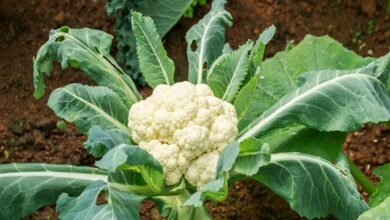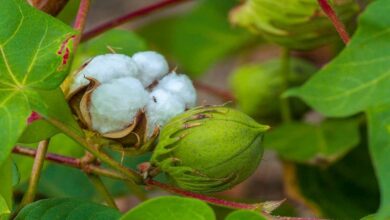White Mold: This disease is very dangerous for kidney bean and French bean crops, know its symptoms
White Mold: The fungus Sclerotinia sclerotiorum is the source of the destructive illness known as white rot disease. French bean and kidney bean plants are particularly affected by this disease. In addition to French beans and kidney beans, this polyphagous disease may infect a wide variety of other crops, including tomatoes, cucumbers, lettuce, melon, onions, sunflowers, carrots, coriander, and brassica.

The disease’s symptoms
Early signs include the development of brown soft rot on the plant’s stems, leaves, blooms, and pods.
White fungal mold: On the afflicted regions, white fungal mold that resembles cotton grows.
Formation of sclerotia: On diseased stems and twigs, black seed-like formations called sclerotia develop.
Decapitation: When deterioration occurs close to the stems, plants become weaker and eventually fall.
The onset of the illness
Every stage of a plant’s development is susceptible to white rot disease. But the incidence is greater during pod development and throughout blooming. The following factors contribute to the disease’s quick spread:
Ascospores are airborne spores that infect dead and aged flowers.
Infected flowers: The virus is transferred to leaves, branches, and pods by contact with infected flowers.
Infection during storage: After the crop is harvested, the illness may potentially spread during storage and transportation.
Infection transmission
Through the wind, the disease’s spores may travel many kilometers. Additionally, seeds, diseased plants, irrigation water, and animals may all transmit the infection. The disease’s spores may also be spread by honeybees via flowers.
Favorable circumstances for the illness
Dense planting and high humidity: The illness is encouraged by crop density.
Climate: The illness thrives in cool, humid conditions (20–25°C).
Sclerotia longevity in soil: Sclerotia may last up to seven years in soil.
Soil moisture: The pathogen germinates when there is sufficient moisture in the top layer of soil.
How is white rot disease managed?
White rot disease management calls for a multifaceted strategy. The following actions may be taken to stop and manage it.
1. Cultural dominance
Crop rotation: Use kidney beans and French beans in an eight-year cycle.
Deep plowing: To stop the sclerotia from germinating, bury them far down in the ground.
Keep enough space between plants to prevent crowded sowing.
Management of irrigation: Steer clear of afternoon irrigation, particularly while flowers are in bloom.
2. Control of chemicals
Apply carbendazim at a rate of 2 grams per liter of water while using fungicides. Apply fungicides, such as Saaf, while the plants are in bloom.
Early-stage treatment: When the fungus’s early symptoms appear, use fungicides.
3. Control by biology
Biological agents such as Pseudomonas fluorescens and Trichoderma harzianum may be used to control illness. Biological therapies aid in stopping sclerotia from germinating.
4. Management of crop residues
Burn or bury the remaining sick plant material deep in the ground after removing it from the field. After harvesting, keep the field tidy.
5. Choosing appropriate types
If disease-resistant cultivars are available, use them.
6. Prompt observation
To spot early signs and take prompt action, routinely check the crop.





